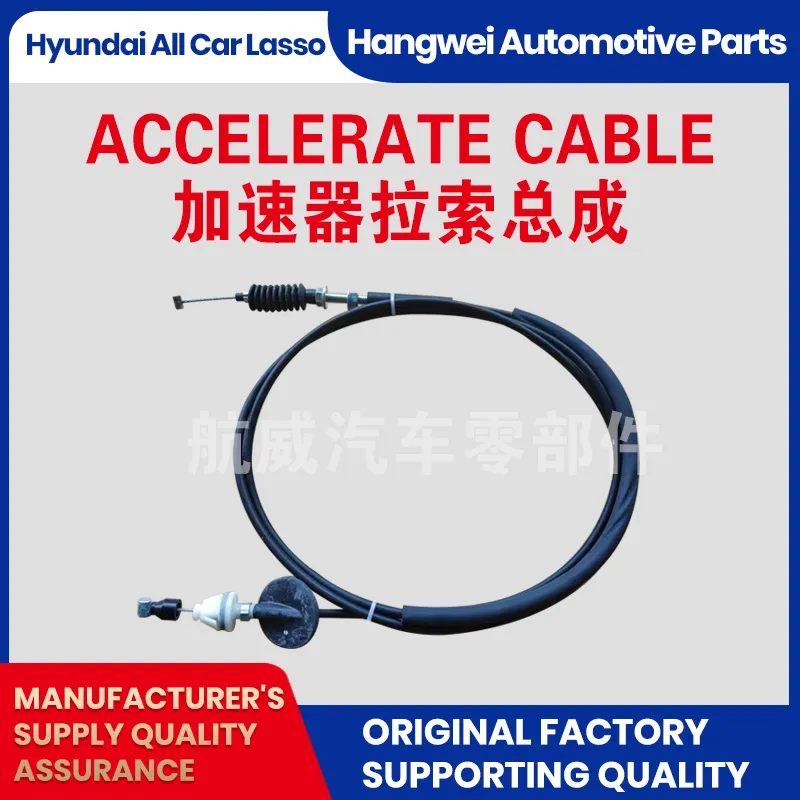handbrake cables
Understanding Handbrake Cables Importance, Maintenance, and Replacement
Handbrake cables, often overlooked in the realm of automotive maintenance, play a crucial role in vehicle safety and functionality. Ensuring that these cables are in excellent condition is not just good practice—it's essential for the effective operation of the handbrake system. In this article, we will explore the importance of handbrake cables, how to maintain them, and indicators that signal they might need replacement.
What Are Handbrake Cables?
Handbrake cables are the components that connect the handbrake lever inside the vehicle to the rear brakes. When the driver pulls the handbrake lever, it pulls on these cables, which in turn engages the brake mechanism at the rear wheels. Handbrake systems can be either mechanical or electronic, but the cables remain a common feature in many traditional vehicles.
The Importance of Handbrake Cables
1. Safety The primary function of the handbrake is to secure the vehicle when parked, particularly on inclines. A malfunctioning handbrake caused by worn or frayed cables can lead to accidents if the vehicle rolls away unintentionally.
2. Stability Handbrake cables also contribute to the overall braking system of a vehicle. A properly functioning handbrake can assist in emergency stops and provide additional braking power when needed.
3. Vehicle Longevity Regular maintenance of handbrake cables can extend the life of other braking components. Worn cables can place unnecessary strain on the braking mechanism, leading to increased wear and tear on brake pads and rotors.
Signs of Worn Handbrake Cables
Recognizing the signs of worn or damaged handbrake cables can save you from potential safety hazards and costly repairs
. Here are some key indicators1. Loose Handbrake If the handbrake lever feels loose and you have to pull it up several clicks for the brake to engage, it may be a sign that the cables are stretching or have become frayed.
handbrake cables

2. Unusual Sounds Listen for any grinding or popping noises when engaging the handbrake. These sounds may indicate that the cables are binding or have become damaged.
3. Off-Center Clutch If the handbrake lever is not centered when at rest or is tilted significantly to one side, this misalignment could signify that the cables are either worn or improperly adjusted.
4. Visual Inspection Periodically, perform a visual check of the cables. Look for frays, cracks, rust, or other signs of wear. If you notice any of these issues, it is best to address them immediately.
Maintenance Tips for Handbrake Cables
Proper maintenance can prolong the life of your handbrake cables and ensure safe operation of your vehicle. Here are a few tips
1. Regular Inspections Schedule periodic inspections of the handbrake system, including the cables. Look for signs of wear and tear to catch potential issues early.
2. Keep Cables Lubricated Some handbrake cables can benefit from lubrication. Consult your vehicle’s manual to determine if this is applicable, and use the appropriate lubricant as recommended.
3. Adjust Tension If your handbrake lever feels loose or requires excessive movement to engage, you may need to adjust the tension of the cables. This task can often be performed at home or by a professional mechanic.
4. Replace When Necessary If you notice any signs of damage or if the handbrake system fails to engage properly, do not hesitate to replace the cables. It's a relatively inexpensive repair compared to the costs and dangers of a malfunctioning braking system.
Conclusion
Handbrake cables are an integral part of vehicle safety, and understanding their importance is crucial for any vehicle owner. Regular maintenance, timely inspections, and knowing the signs of wear can ensure your vehicle remains safe and functional for years to come. If you're ever in doubt about the condition of your handbrake cables, consult a professional mechanic to ensure your vehicle is roadworthy and secure. Taking these precautionary measures will not only protect your vehicle but also enhance the safety of you and your passengers on the road.
-
Workings of Clutch Pipe and Hose SystemsNewsJun.04,2025
-
The Inner Workings of Hand Brake Cable SystemsNewsJun.04,2025
-
The Secrets of Throttle and Accelerator CablesNewsJun.04,2025
-
The Hidden Lifeline of Your Transmission Gear Shift CablesNewsJun.04,2025
-
Demystifying Gear Cables and Shift LinkagesNewsJun.04,2025
-
Decoding Clutch Line Systems A Comprehensive GuideNewsJun.04,2025
